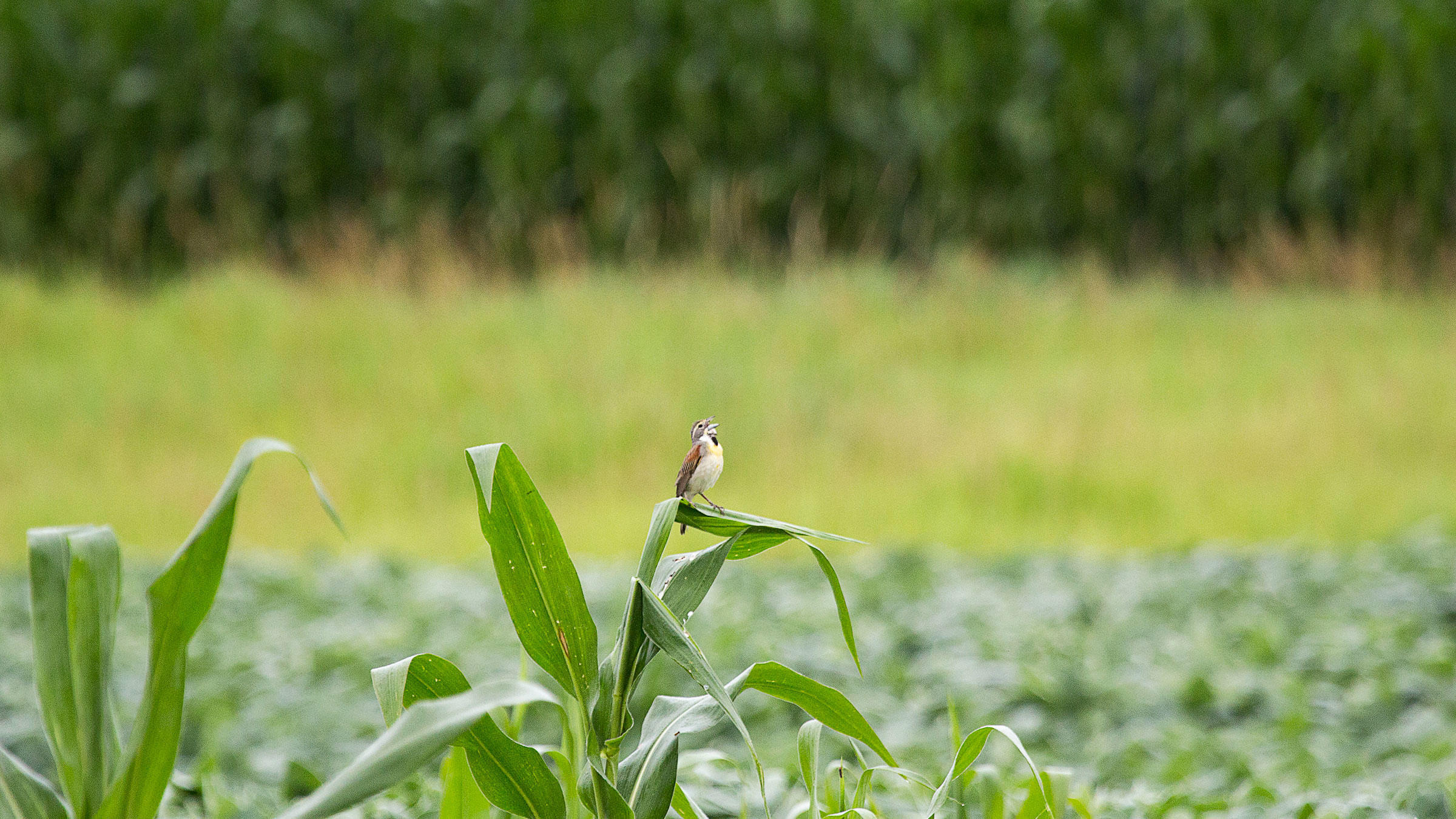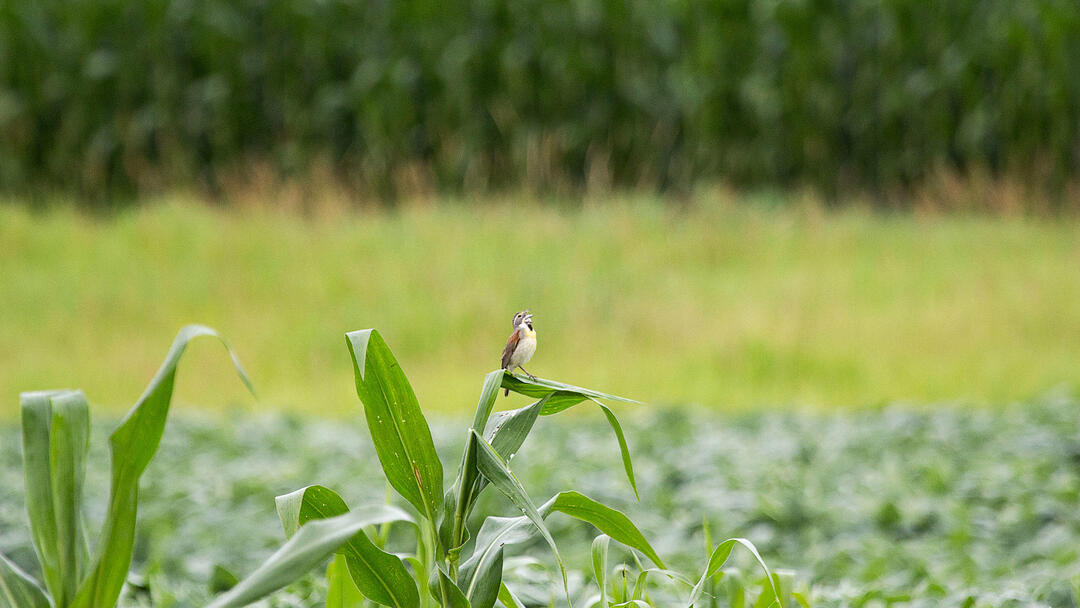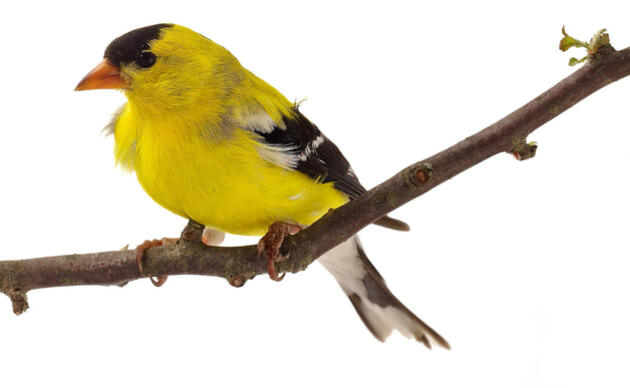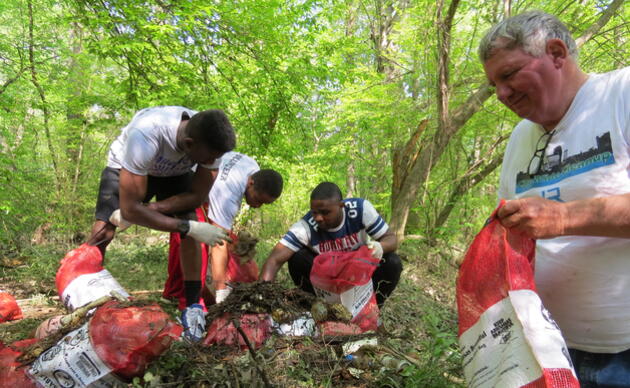Audubon believes that working lands can work for birds and people. But the increasing use of dicamba is putting birds at risk in our agricultural landscape. Dicamba is an herbicide, the use of which is skyrocketing because Monsanto/Bayer is pushing its soybean and cotton varieties that have been genetically modified to be resistant. Dicamba's volatility means it can do damage to non-GMO crops and native plants far beyond where applied. If you suspect off-target damage has occurred please file a complaint with the Plant Board.
LOOSENING RESTRICTIONS
On May 3, 2021, the Plant Board went against the science when they voted 9-5 to extend the cutoff date from May 25 to June 30 for spraying dicamba over the tops of soybean and cotton. They also cut the protective buffer in half to 1/2 mile for certified organic and specialty crops, not that buffers actually protect from dicamba's volatility. These changes were made despite University of Arkansas Division of Agriculture scientists reporting that “there are no scientific results that show dicamba can be used throughout the year in Arkansas without substantially injuring crops.”
DOCUMENTING DAMAGE
In 2019, 2020, and 2021, Audubon led a community science project to monitor and document dicamba herbicide damage to vegetation on public lands in order to gain a better understanding of the geographic range, extent, and severity of unintended damages. The full report is attached below.
Our data reveal that dicamba’s off-target impact to plants is widespread in both geographic scope and number of species afflicted. Audubon staff and trained volunteers made 363 observations of apparent dicamba symptomology on a variety of plants across 20 eastern Arkansas counties. Plant species impacted, which included sycamore, oak, pawpaw, redbud, and trumpetvine, were growing on public lands such as university research farms, wildlife management areas, city parks, cemeteries, and many county and state roads. This includes three state natural areas that harbor the endangered species Red-cockaded Woodpecker and Pondberry. There are at least 39 instances where our observations occurred within two miles of where Plant Board inspectors collected pigweed tissue samples that tested positive for dicamba on dates that are after the May 25, 2020, cutoff.
A 2020 report by National Wildlife Federation, Prairie Rivers Network, and Xerces Society, "Drifting Toward Disaster," summarizes what we know, and don't know, about dicamba's off-target impacts (attached below).
LEGAL CHALLENGES
In February 2020, a Missouri peach farmer won a suit against Bayer and BASF for damages to his farm. Documents brought to light in the investigation show the chemical companies released their products knowing that dicamba would cause widespread damage to crops that weren’t resistant to dicamba. They used “protection from your neighbors” as a way to sell more of their products. In doing so, the companies ignored years of warnings from independent academics, specialty crop growers and their own employees. In June, A panel of judges for the U.S. Court of Appeals for the Ninth Circuit ruled that the EPA failed to properly consider the impacts on farmers and the environment in approving new dicamba products. They vacated -- or ended -- the registration immediately. Increduously, the EPA promptly re-registered dicamba in October. Though they imposed yet more restrictions in an attempt to further reduce the damage done by volatility, this rushed decision is going to be challenged in the courts. Recently the EPA admitted that the previous administration ignored the science when registering dicamba.
BACKGROUND
After receiving 1,300 complaints about damage to crops, trees, and more, the Plant Board instituted an emergency ban on the growing season use of dicamba. In 2017, Governor Hutchinson convened an 18-member task force representing a cross-section of those most affected by the issues surrounding dicamba use. After examining all sides of the issue and hearing from a variety of experts and stakeholders, the task force came to a consensus that the cutoff date for the in-crop use of dicamba in Arkansas should be April 15. They decided this issue should be revisited for the 2019 growing season after more research has been done.
Research conducted by the University of Arkansas shows that the new dicamba formulations are volatile—the product can move off target in all directions, damaging 1.5-times more acres than are treated. The high temperatures and humidity we experience in Arkansas’ warmer months can dramatically increase volatility and thus collateral damage. Damage has already been documented to non-resistant crops, honeybee production, nearby trees, duck food, and native plants and pollinators. In a landscape full of GMO crops, the build-up of volatile dicamba could be enough to damage our state natural areas, wildlife management areas, national wildlife refuges, family farms, and the wildlife they harbor.
Despite the scientific evidence, the Arkansas State Plant Board voted on December 6, 2018, to extend the cutoff date and allow dicamba use to May 21. Governor Hutchinson approved their proposal. This started a 30-day public comment period, which closed Feb. 5, 2019. At a public hearing on February 20, to our shock and dismay, the Plant Board voted to advance the cutoff date even further into the growing season, to May 25, and to cut back buffer widths and make other changes that were not in the original proposal the public commented on. Following that, Audubon and our advocates contacted legislators who review state agency rule changes. We made the case the Plant Board did not follow proper procedures nor their mission. Despite tough questioning of Plant Board staff, approval was granted and the rule change became law.
Rains and flooding delayed the 2019 and 2020 planting seasons. In spite of the law, dicamba spraying was widespread throughout those summers. Proof is in the hundreds of pesticide misue complaints, leading to hundreds of tissue samples collected by Plant Board inspectors that tested positive for dicamba, resulting in many violations. Cases are still being investigated and tissue samples are still being processed, indicating more proof of widespread illegal dicamba use is to come. Making it legal to spray through June 30 only means that off-target damage doesn't result in a violation, though illegal spraying beyond the cut-off date continued in 2021 and 2022.
University of Arkansas weed scientist Dr. Jason Norsworthy has reported on multiple occasions to the Plant Board the latest research findings on dicamba's volatility from AR and other states. Though there are some promising "volatility reducing agents" on the horizon, the science so far concludes that it can’t be controlled, and thus dicamba cannot be sprayed in warm weather without off-target impacts. Despite hearing the science and receiving a majority of public comments that requested a mid-April cutoff, on December 11, 2019, the Plant Board voted to not change the regulations going into 2020. On December 2, 2020, they voted again to keep current dicamba restrictions in place for 2021, despite an attempt to move the spray cutoff from May 25 to June 15. Incredulously, on May 3, 2021, without any change in the science or decrease in complaints, they they voted 9-5 to extend the cutoff date to June 30.
Hear more of the story in this Us & Them podcast.
Audubon Magazine covered the issue in their Winter 2022 issue.
Get Involved
Be a voice for birds
Join our Advocacy Team to receive action alerts about legislation and policy when Audubon Delta's birds need your voice.
Join Our Flock
Signing up is the best way to keep up with Audubon's latest news, programs and initiatives.





